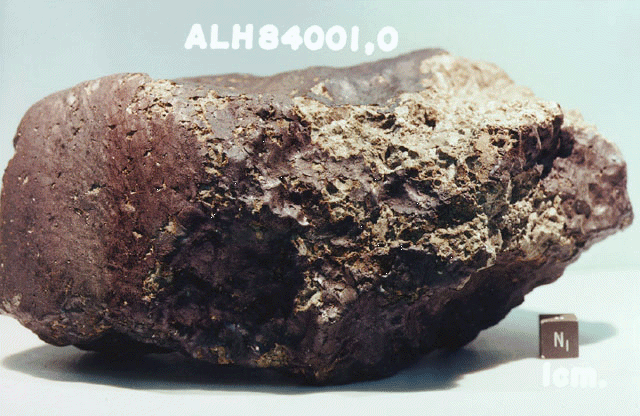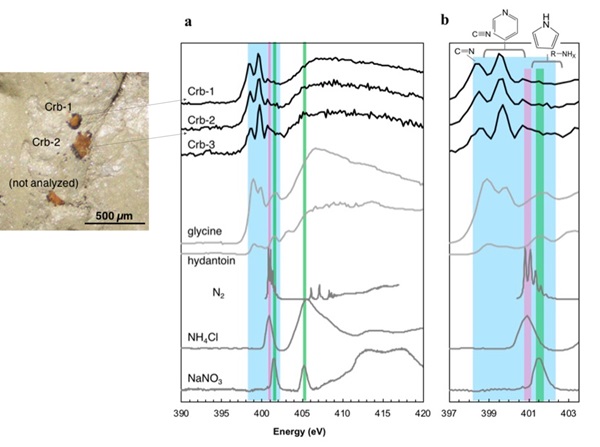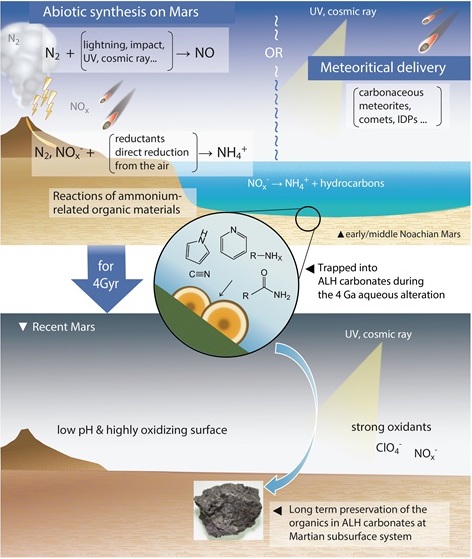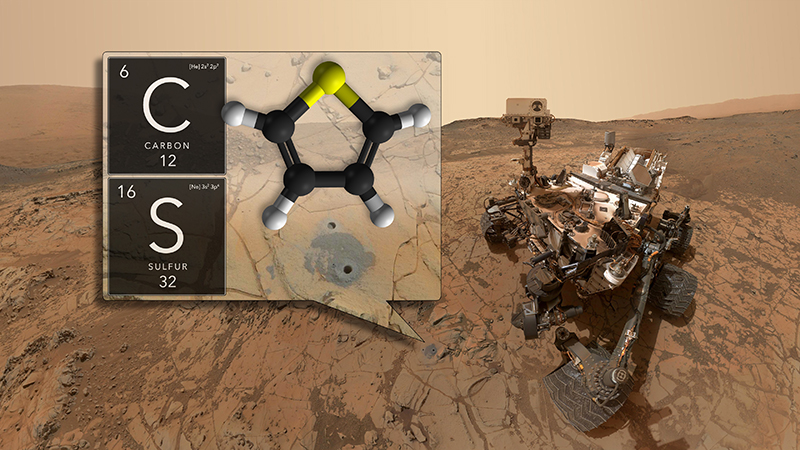
For decades, scientists have been searching for evidence of organic compounds – the building blocks of life – on Mars. The Mars rover Curiosity first confirmed organics in Martian rocks a few years ago. Then, in late April 2020, more exciting news … researchers at the Earth-Life Science Institute in Japan said they have detected 4-billion-year-old nitrogen-containing organic molecules in a famous Martian meteorite, a rock ejected from Mars, likely via an impact event, which traversed interplanetary space and ultimately landed on Earth. The meteorite is none other than Allan Hills 84001 (ALH 84001), a famous Mars meteorite picked up in the snow fields of Antarctica in 1984. This new work – and the discovery of nitrogen in this meteorite – may be a key to understanding how organics originated on Mars and whether any of them might be life-related.
The new peer-reviewed findings were published in Nature Communications on April 24, 2020.
The research team, including scientist Atsuko Kobayashi from the Earth-Life Science Institute (ELSI) at Tokyo Institute of Technology and research scientist Mizuho Koike from the Institute of Space and Astronautical Science at Japan Aerospace Exploration Agency (JAXA), found nitrogen-bearing organic material within carbonate minerals inside the meteorite. The organics are estimated to be 4 billion years old. From the paper:
Understanding the origin of organic material on Mars is a major issue in modern planetary science. Recent robotic exploration of Martian sedimentary rocks and laboratory analyses of Martian meteorites have both reported plausible indigenous organic components. However, little is known about their origin, evolution, and preservation. Here we report that 4-billion-year-old (Ga) carbonates in Martian meteorite, Allan Hills 84001, preserve indigenous nitrogen(N)-bearing organics by developing a new technique for high-spatial resolution in situ N-chemical speciation. The organic materials were synthesized locally and/ or delivered meteoritically on Mars during the Noachian age. The carbonates, alteration minerals from the Martian near-surface aqueous fluid, trapped and kept the organic materials intact over long geological times. This presence of N-bearing compounds requires abiotic or possibly biotic N-fixation and ammonia storage, suggesting that early Mars had a less oxidizing environment than today.



The carbonate minerals themselves are significant, since they typically precipitate from groundwater on Earth. This adds even more evidence, along with all of the data from various Mars rovers and orbiters, that Mars was once much wetter than it is now, with plentiful organics. Such an environment could have been ideal for life to get a start on the planet.
The researchers used state-of-the-art analytical techniques to determine the nitrogen content inside the carbonates.
So why is the nitrogen important?
First, the team found that the amount of nitrogen in the form of nitrate was insignificant, meaning that early Mars had a much less oxidizing environment than it does today. (Oxidizing is when a substance combines chemically with oxygen or another oxidizing agent. A good example is iron or steel metal rusting in the presence of oxygen and water.) That’s good news for the possible emergence of life, since nitrate is a very strong oxidant. Also, as noted in the paper, these nitrogen-bearing compounds require either abiotic (non-biological) or biotic (biological) fixation. The paper discusses various possible abiotic sources, but unfortunately not the biotic ones.

While the findings show even more evidence for organics on early Mars, scientists still don’t known exactly how those organics were created. They could be either abiotic, biotic, or both. Meteorites and comets are thought to have delivered at least some of them to the surface of ancient Mars, but other organics are thought to have formed directly on the planet itself.
The researchers also had to make sure that the organics were truly Martian and not terrestrial contamination. To do this, they used silver tape in an ELSI clean lab to pluck off the tiny carbonate grains, which are about the width of a human hair, from the host meteorite. The grains were then prepared to further remove any possible surface contaminants with a scanning electron microscope-focused ion beam instrument at JAXA. In addition, they used a technique called Nitrogen K-edge micro X-ray Absorption Near Edge Structure (µ-XANES) spectroscopy, which allowed them to detect nitrogen present in very small amounts and to determine what chemical form that nitrogen was in. As a comparison, control samples from nearby igneous minerals in the meteorites showed no detectable nitrogen, indicating that the organic molecules were only in the carbonate.
Surface conditions on current Mars are extremely hostile to the preservation of organics, but as this study, and ones based on findings from Curiosity, have shown, organics can still be preserved quite well inside rocks. There also might be plenty of organic compounds in the near-surface of Mars, still waiting to be found. The organics found by Curiosity are in mudstones – composed of clay and silt-sized particles of ancient mud – that used to be at the bottom of lakes in Gale Crater. Future missions, such as the upcoming Perseverance rover, will be able to further determine the abundance of organics still on Mars now.

From the paper:
Whatever the origin, the presence of the organic and reduced nitrogen on early/ middle Noachian Mars indicates the importance of Martian nitrogen cycle. If considerable amounts and variations of organic matter were produced and/or delivered and preserved at the Martian near-surface system over geological time scales, these compounds have a chance to evolve into more complicated forms. It is expected that additional hidden records of the Martian nitrogen cycle will be acquired by future investigations, including a sample return mission from the Martian Moons eXploration (MMX), Mars Sample Return missions, and exploration of the Martian subsurface, as well as further advanced studies of Martian meteorites.
The discovery of nitrogen in some Martian organics is another significant step toward understanding how organic compounds formed on ancient Mars, how abundant they might be and whether any of them could be evidence of life itself.
Bottom line: Researchers have discovered 4-billion-year-old nitrogen-containing organic molecules in Martian meteorites.
Source: In-situ preservation of nitrogen-bearing organics in Noachian Martian carbonates











